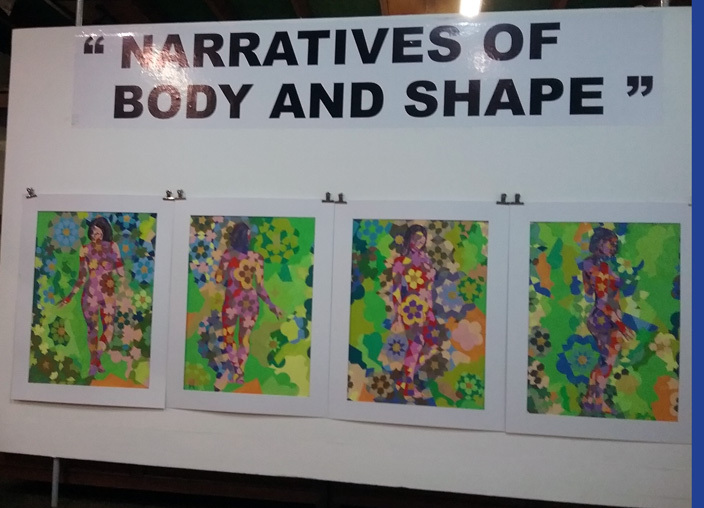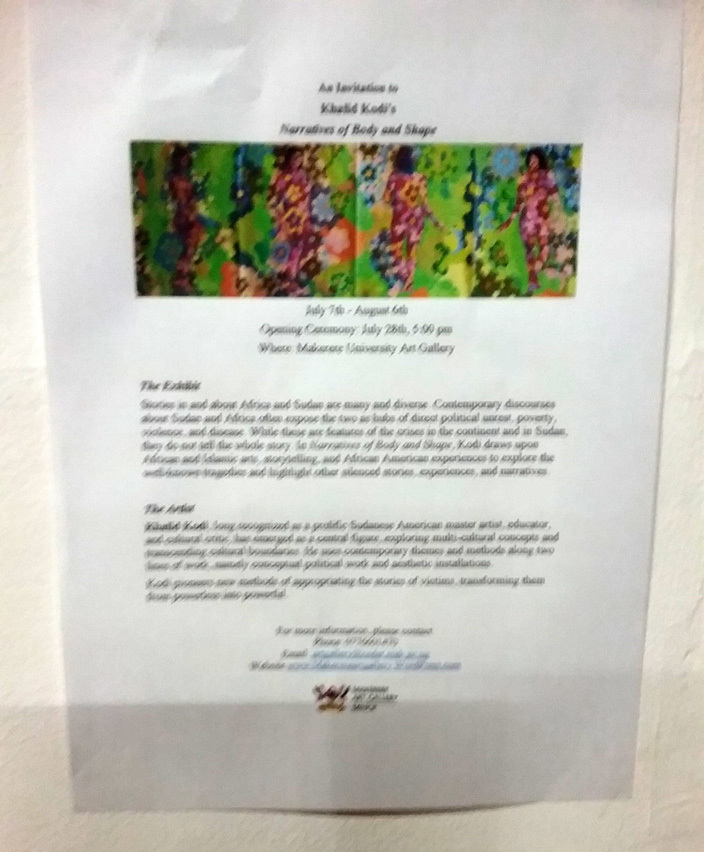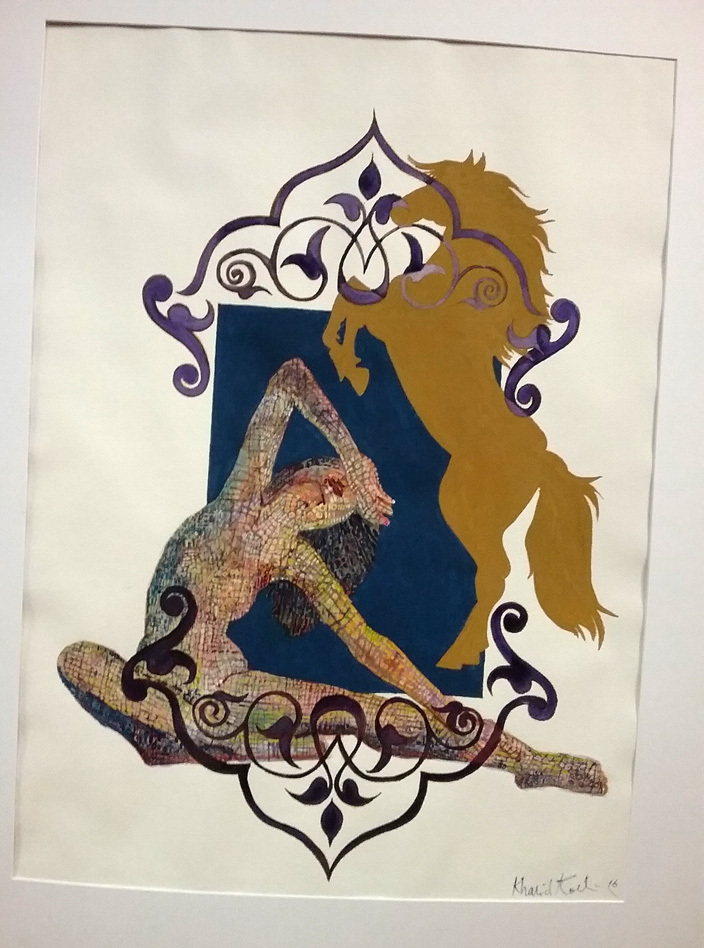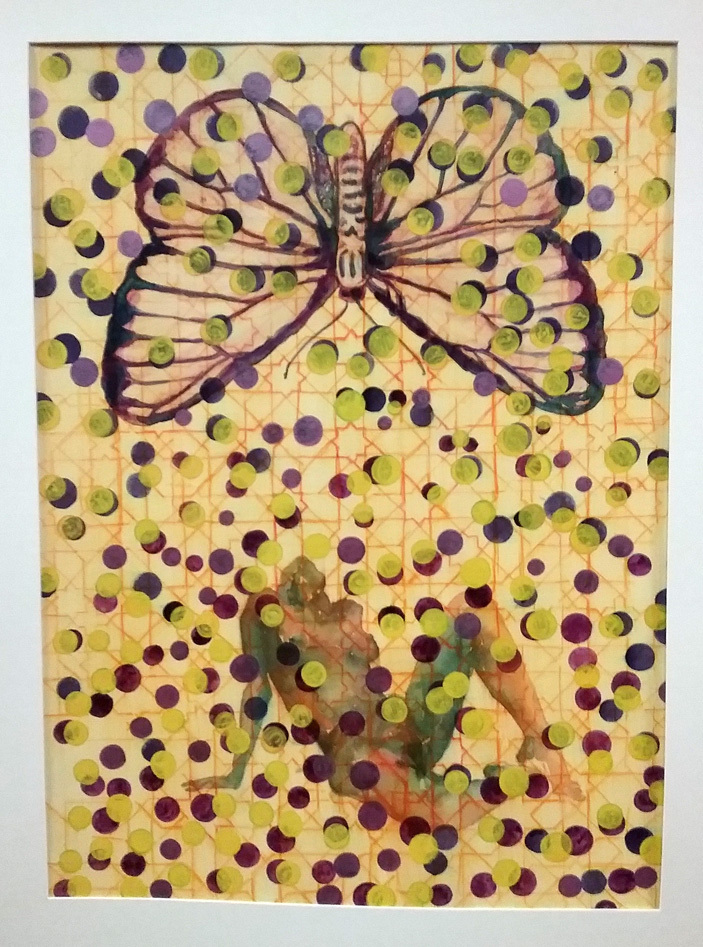Khalid Kodi's art lends new insights into the human body; Islamic culture
A lot, I could say because he is stretching boundaries in a show that offers interesting new insights on the female body and Islamic Culture.
The human body has been a widely explored theme in visual arts. So, those who learnt about the art exhibition on body shape by Sudanese academic- Khalid Kodi at Makerere University art gallery-may have wanted to know what he was doing differently.
A lot, I could say because he is stretching boundaries in a show that offers interesting new insights on the female body and Islamic Culture.

The exhibition entitled Narratives of Body and Shape officially opened on Thursday at the gallery but has been running since early this month. It will go on until the end of next week.
In this exhbition, Kodi combines subtly nude female bodies with elements of Islamic decorative art to present new interesting ways of thinking about the human body in Islamic culture.
He renders beautiful and shapely female bodies washed up in layers of dripping colours and different patterns of calligraphic art that is reminiscent of Islamic architecture. The female body is rendered with grace, blurring any overt signs of nudity while maintaining the sensual shapely form.

Raised in a culture where a woman's body is sacred and where "covering up" is the order of the day, Kodi seems to be challenging the status quo, and using his art to ask pointed question on strongly held notions about women in Islamic culture. For he seems to be suggesting that the bare human body is something to be celebrated and not fetishized; certainly not to be ashamed of.
That the human body is spiritual and sacred in its beauty and that nudity is not necessarily obscene. For a man brought up in a strong Islamic culture, Kodi might come across as deviating from the acceptable limits. Except he sees things differently. "Iam trying to celebrate the human form and show its beauty, using movement as a language to express ideas that perhaps challenge the norm but which also offer alternative ways of looking at our culture," he says

Kodi's style depicts a free hand that experiments with design; that distorts forms to create new interesting patterns that he may also not have foreseen. It is this kind of freshness that he brings to the conversation on beauty, the female human body and Islamic culture. In the end, his work challenges us to discard our deeply held perceptions and embrace beauty in its raw but graceful form.
I see elements of pop art that seem to permeate his pallete, sitting well with the medieval Islamic aesthetics and bringing out something that transcends a particular culture or religion. It is this beauty, this new fresh of breath air that you should look out for when you go to see his exhibition before it closes on Saturday next week.

It is this beauty that Hasfa Mukyala, the curator of Makerere university art gallery cherishes when she says that "Kodi's work has been such a joyful deviation from the norm; an insightful look at how society looks at us- women and something that our students and the public have learnt from and enjoyed."
Kodi's fact file
· Born and raised in Sudan
· Over 50 years old
· Went to school in Khartoum and Boston, United States of America
· Teaches art at Boston college, Brown University
· He is part of the African American Master Artists in residence programme
· He is married and has a daughter
